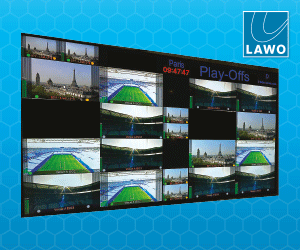SDP is based on the idea that broadcasters should be able to use whatever choice of transport is most appropriate for a project.

The concept of software-defined production (SDP) seeks to offer simplicity in the face of potential migration migraines, writes Todd Riggs of Ross Video.
Theres an old joke about the Isle of Skye, a small island of 10,000 inhabitants situated off the northwest coast of Scotland: if you cant see the island from the mainland, it must be raining; if you can see the island, its just about to rain. Working in a technology-focused industry like broadcast reminds me of the joke because it often feels like we too are perpetually living in one of two states: migrating to the latest platform/standard/format, or waiting for its imminent arrival.
Please dont think Im complaining new technology is obviously wonderful, insofar as it allows R&D engineers to create cool new products and (hopefully) make customers lives easier. We may have seen a few white elephants and false dawns along the way 3D probably stands tallest among them but the majority of new technologies in broadcast have helped create an end product that has been better to look at and easier to produce. The latest changes taking place in our industry also seek to achieve these same goals, but the process of integrating these new technologies into existing facilities and workflows looks like a delicate balancing act that must consider system complexity and scale, budget and organisational tolerance for change.
IP and UHD/4K are currently the two hottest discussion topics in our industry. They open up exciting opportunities for greater workflow efficiencies and better-looking end products, so the attraction is obvious. However, its only fair to recognise the challenges they bring, especially for established broadcasters with multiple sites and legacy hardware. Furthermore, should these two technologies always be married? Should UHD always be transported using IP? Our view is: not necessarily.
When the openGear platform an open standard for gear cards now adopted by over 90 partners was launched, the desire was to create a standard that would simplify customers buying decisions and create certainty where there had previously been complexity and confusion. This brings me neatly on to the concept of software-defined production (SDP), a philosophy that seeks to offer simplicity in the face of potential migration migraines.
SDP is based on the idea that broadcasters should be able to use whatever choice of transport is most appropriate for a project. It delivers agility and scalability by moving away from single-function devices that mostly sit idle, towards a pool of flexible resources able to meet production needs on demand. As IP has crystallised as a technology, it has become apparent that it is not an ideal or singular path to achieve agility in all cases.
With SDP, however, manufacturers can combine and orchestrate software-defined, modular products to create agile production workflows with demonstrable cost benefits. An SDP approach also enables customers to maximise the utility of existing hardware resources, a very positive message when it comes to future-proofing capital expenditure investments and removing the element of risk from these purchases. SDP provides certainty and clear upgrade paths exactly what broadcast professionals are looking for in these turbulent times.
By building a family of transport-agnostic products, enlightened manufacturers are making a strong statement we believe that the one-network approach is underpinned by hybrid production models (IP and SDI) that will be around for a significant time to come. The key is ensuring that customers have the right options given their scale, budget and tolerance to risk, and that no one is trampled by an unnecessary or compromising technology rush.
















































































